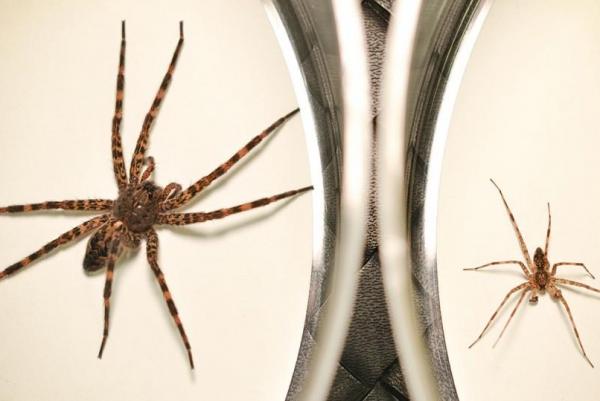
LINCOLN, Neb., Oct. 7 (UPI) — Female dark fishing spiders get hungry after sex. Often, their partners oblige by offering themselves as a post-coital meal. New research suggests the cannibalistic kink bolsters fertility.
When a team of researchers from the University of Nebraska-Lincoln and Gonzaga University withheld the after-sex meal from female spiders, they found the starved specimens produced fewer offspring than those who were permitted to dine on their partner.
Follow-up tests proved a meal of crickets after sex offered no benefit to fertility.
“It’s only when a female eats the male that we see these benefits,” Steven Schwartz, a faculty member at Gonzaga who lead the study while a doctoral student at Nebraska, said in a news release. “So there’s something unique, something special, about the males.”
Schwartz and his colleagues published their unusual discovery in the journal Current Biology.
“There might be a nutrient, or maybe a cocktail of nutrients, that is somehow concentrated in the males’ bodies,” Schwartz added. “We don’t know what that is, but there is something going on there.”
Female dark fishing spiders mate with multiple males, so calling it quits after a single sexual encounter seems like a strange strategy for males. But scientists say they may not have much of a choice. Females are much larger, and it’s likely any resistance to the arrangement would likely fail.
There’s also evidence that male dark fishing spiders prefer virgin mates. The chances of finding a virgin go down as time goes on, so survival may have limited upside.
Research into sexual self-sacrifice is limited, and the latest findings don’t exactly mesh with previous observations. As a result, biologists may have to rethink the evolutionary models they crafted to account for strange mating behaviors.
“Our particular results … don’t necessarily fit the typical pattern, suggesting that the field might need more data and a greater diversity of examples before drawing conclusions about the evolutionary patterns of terminal investment strategies,” concluded Eileen Hebets, study co-author and a professor of biological sciences at Nebraska.






